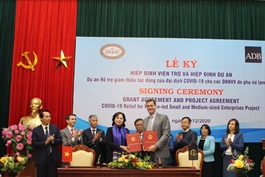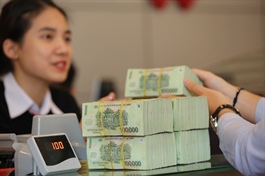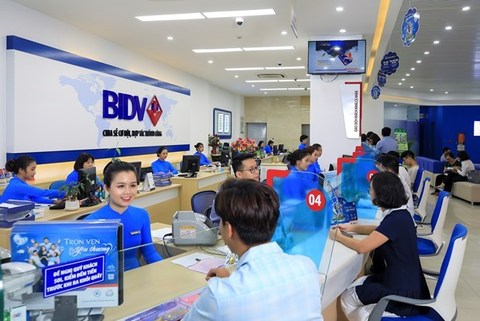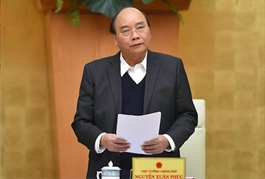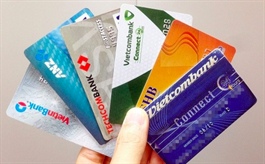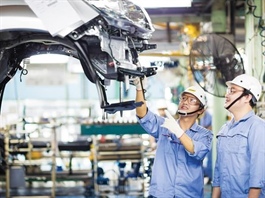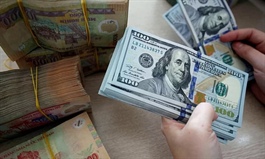US’ branding of Viet Nam as currency manipulator biased: Experts
US’ branding of Viet Nam as currency manipulator biased: Experts
The US Treasury Department’s labelling of Viet Nam as a currency manipulator is biased, as it is only based on US standards and lacks suitable consideration as well as recommendations from international organisations, according to experts.
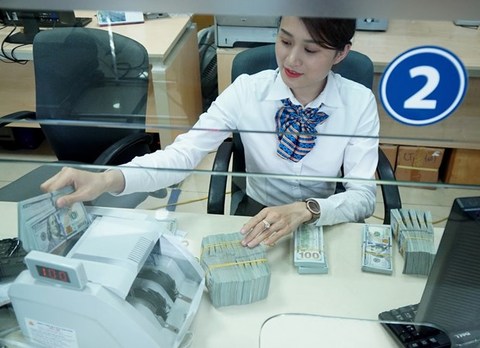
Viet Nam does not depreciate the Vietnamese dong.
BIDV Chief Economist Can Van Luc and experts from the BIDV Training and Research Institute described the labelling as a unilateral action that fails to look into the characteristics of Viet Nam’s economy and the recommendations of international institutions regarding its economy.
Economic tools are necessary for Viet Nam to sustainably develop and be resilient to external shocks, they said, adding that such tools are used in accordance with international rules.
According to the Macroeconomic and Foreign Exchange Policies of Major Trading Partners of the US report, the US Department of Treasury examined trade partners based on three criteria: a bilateral trade surplus with the US of at least US$20 billion, a material current account surplus equivalent to at least 2 per cent of GDP, and engagement in persistent one-sided intervention in the foreign exchange market, with net purchases of foreign currency conducted in at least six out of 12 months and with net purchases totalling at least 2 per cent of GDP over a 12-month period.
The US Department of Treasury determined that under the Omnibus Trade and Competitive Act of 1988, Viet Nam is a currency manipulator.
Truong Van Phuoc, former acting Chairman of the National Financial Supervisory Commission, said there were several points in the Treasury’s report that would need to be clarified.
Regarding the large trade surplus with the US, Phuoc, who is also a former head of the Foreign Exchange Management Department at the State Bank of Viet Nam (SBV), said the country’s trade activities in the past three decades reflected its transition process to a market-oriented economy, with the distinguishing features of cheap labour costs, labour-intensive growth, inflows of foreign investment, and exploitation of natural resources resulting in cheap exports. Therefore, it was unreasonable to say that Viet Nam uses foreign exchange to make its products even more of a bargain.
With a material current account surplus, Viet Nam had enjoyed a trade surplus in recent years, but the actual amount was not significant, at around $5-10 billion each year and over $20 billion in 2020 in particular. As most of the country’s current account came from remittances, foreign exchange was not the element that makes the current account surplus exceed 2 per cent of GDP.
Regarding interventions in the foreign exchange market, Viet Nam does not allow foreign currencies to be used as a means of payment, which means foreign investors and exporters must exchange their money into Viet Nam dong to conduct business activities.
For this reason, it would be compulsory for the SBV to purchase foreign currencies, since it facilitates business activities of people in Viet Nam, Phuoc stressed.
Another issue is that the US perceives that Viet Nam has bought foreign currencies to set the value of the Viet Nam dong below its real value.
Phuoc said Viet Nam should explain to the US more clearly about its currency’s parity with the US dollar.
This parity largely depends on the inflation difference between Viet Nam and its major trading partners, especially the US, he elaborated, adding that annual inflation in Viet Nam has averaged 4 per cent in recent years, with 5 per cent the highest, while exchange rate growth has been maintained at 1-1.5 per cent, or 2 per cent in certain years. Compared to inflation, the exchange rate has increased at a much slower pace.
"There is no such thing as currency devaluation, but the Viet Nam dong’s current value is even higher than its real value. These are factors indicating that Viet Nam has not manipulated its currency,” he stated.
Echoing this view, Luc said the SBV’s regulations on exchange rates had always been in line with common monetary policy so as to achieve the consistent targets of keeping inflation under control and ensuring macro-economic stability, not to create an unfair competitive edge in international trade.
He noted that in contrast to the US Treasury’s view, calculations by experts from the BIDV Training and Research Institute showed that the real value of the Viet Nam dong appreciated by 2.6 per cent between 2017 and 2019. Subsequently, Viet Nam’s trade with the US might have been negatively affected due to the dong’s appreciation against the dollar during these three years, instead of creating a real export advantage for the country.
Therefore, the US Treasury’s view that the Viet Nam dong devaluation has provided an export advantage for Viet Nam needs to be considered in a more thorough and precise manner, according to Luc.
In addition, the trade surplus with the US and the material current account surplus are the result of many factors relating to the particular characteristics of Viet Nam’s economy, and the depreciation of the dong has not overly benefited exports.
Exporting large volumes also meant importing large volumes, Luc explained, noting that Viet Nam’s export and import activities were dominated by the FDI sector, which made up 70 per cent of exports and 59 per cent of imports in 2017-2019, according to data from the General Statistics Office of Viet Nam.
As local support industries remained weak, to produce export commodities, FDI firms still had to import input materials regardless of whether the exchange rate is high or low, he added.
Meanwhile, the SBV’s purchase of foreign currency in the recent past was to ensure the forex market runs smoothly amid an abundant foreign currency supply, thereby helping to stabilise the macro-economy and raise forex reserves (which are low compared to regional countries) in order to strengthen the country’s financial and monetary security, not to create a trade advantage.
According to the International Monetary Fund (IMF), Viet Nam’s forex reserves at the end of 2019 were equivalent to only 3.5 months’ worth of imports, slightly higher than the IMF’s recommended minimum of three months’ but much lower than the five months’ worth in Singapore, eight months’ in the Philippines and the Republic of Korea, nine months’ in Thailand, and 14 months’ in China.
Given this, Luc noted, Viet Nam had never pursued a policy of devaluing its currency to create a competitive edge for its exports. Instead, the trade surplus with the US was actually the result of their trade structures.
Efforts to maintain bilateral trade ties
According to Associate Professor Dinh Trong Thinh, a senior lecturer at the Academy of Finance, the US’ inclusion of Viet Nam on the list will bring about various risks, including discrimination in taxation and the pricing of goods from Viet Nam in the US market.
Luc said that under the 2015 Trade Facilitation and Trade Enforcement Act, the US Department of Treasury would submit a report to congress and conduct negotiations between authorised Vietnamese and US agencies, to seek and implement joint solutions to make two-way trade more balanced.
At the same time, Viet Nam should exert more efforts to enhance the efficiency of management and strictly handle activities masquerading as trade exchange and investment to take advantage of the Viet Nam-US partnership and free trade agreements as well as tax avoidance, he said.
Phuoc believes the US administration will listen to Viet Nam and experts in trade and exchange rates, thus recognising that Viet Nam has no purpose of currency devaluation. Through dialogue and discussions, and especially with support from prestigious economists in the US, the US side would gain an in-depth insight into the matter, he added.
At the same time, the SBV has vowed to actively coordinate with relevant ministries and sectors to deal with issues of concern to the US in a spirit of cooperation for mutual benefit, leading to a harmonious and sustainable trade relationship.
Meanwhile, the central bank will also continue to regulate monetary policies in order to rein in inflation, stabilise the macro-economy, and support economic growth in a suitable manner, while adjusting the exchange rate flexibly to match macro balancing efforts as well as market developments and monetary policy purposes, not to create any unfair competitive advantage.
At a meeting held on December 18 to discuss the Government’s draft Resolution 01, Prime Minister Nguyen Xuan Phuc agreed to assign ministries and agencies to continue working closely with the US side to maintain the momentum of the bilateral partnership and make it stronger in the future, bringing practical benefits to the people and businesses of both countries.



